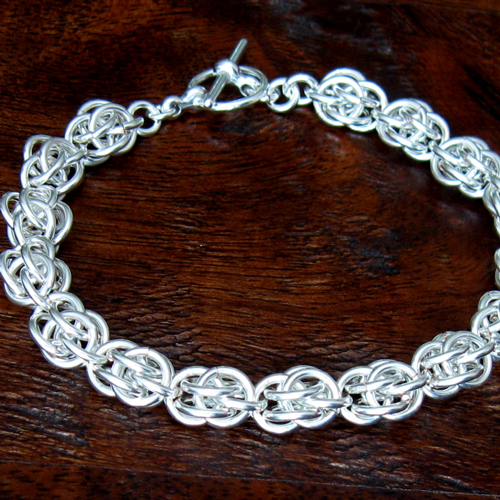Fieldstone Chain - In this example we are using 16ga 5.0mm I.D. jump rings for the main chain. 16ga 3.0mm ID jump rings are used on each end of the chain to add a closure. In this configuration the chain uses 12 rings per inch. Average bracelet 160 rings. The A.R. for this chain is between 3.8 or 3.9.
This project uses the following size jump rings.
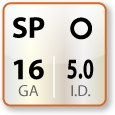
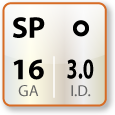
|
STEP 1: Materials In this example we will use 16ga 5.0mm ID [large] Jump Rings and 16ga 3.0mm ID [small] Jump Rings to make the chain. You can create this chain with other sizes. Use the A.R. guide (value 3.8 to 3.9) to help estimate ring size This pattern repeats every six rings. It may help to open groups of six rings for your convenience. .
|
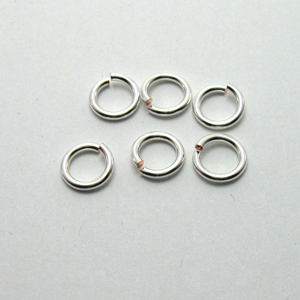 |
||
|
STEP 2: The Starter - Ring I find that attaching a piece of scrap wire to the beginning of the chain makes it easier to manage. This step is not required.
|
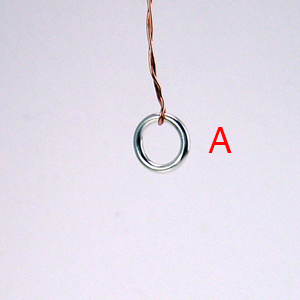 |
||
|
STEP 3: Add a New Jump Ring Open a new LARGE jump ring [B] and attach it to jump ring [A] |
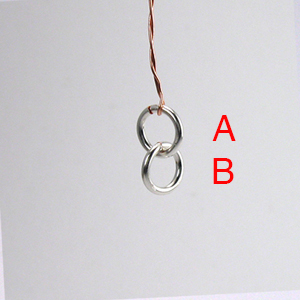 |
||
|
STEP 4: Add New Ring |
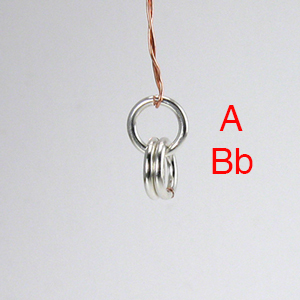 |
||
|
STEP 5: Add a New Ring |
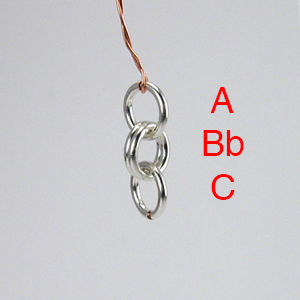 |
||
|
STEP 6: Add New Ring Open a new jump ring [c] and attach it to the two rings in previous row, [B & b]
|
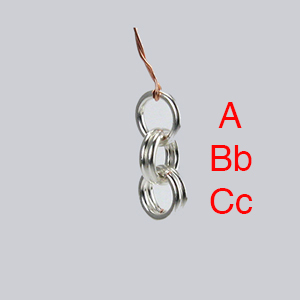 |
||
|
STEP 7: Push Together In the next few steps we will push the rings together and add the last ring. Push the outer rings [A] on the left and [C/c] on the right, towards the center.
|
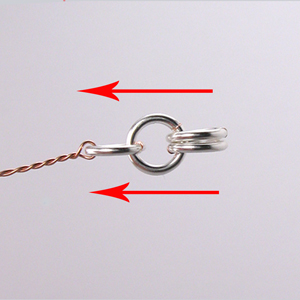 |
||
|
STEP 8: Push Together |
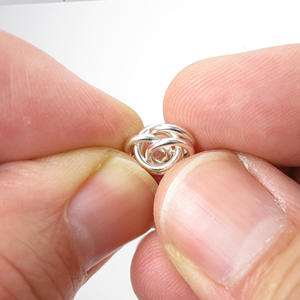 |
||
|
STEP 9: Visualize the Path of the New Ring In the next step you will be adding a new jump ring. The new jump ring is going to follow the line of the red twist tie we have used to outline the path. |
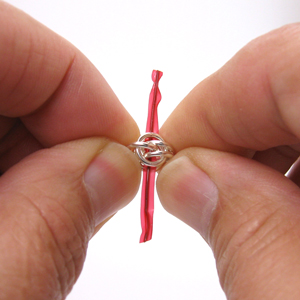 |
||
|
STEP 10: Add New Jump Ring- Last Ring |
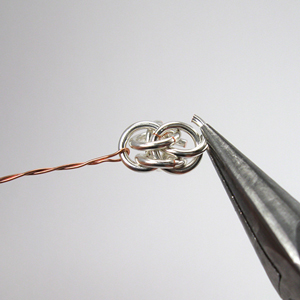 |
||
|
STEP 11: From Another Angle Still the same from step 10, just another angle to help you follow the path. Close the ring when done.
|
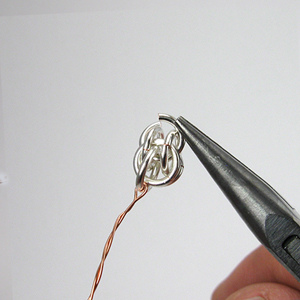 |
||
|
STEP 12: Repeat the 6 Ring Process, Steps 2 thru 11 Open a new LARGE [16ga 5.0mm ID] Jump Ring and attach it to the bottom. The new ring will sit between the pair [Cc]. Try not to let it get stuck to one side or the chain will kink.
|
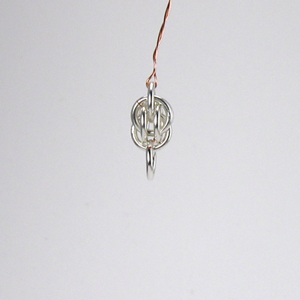 |
||
|
STEP 13: Add 2 Jump Rings
|
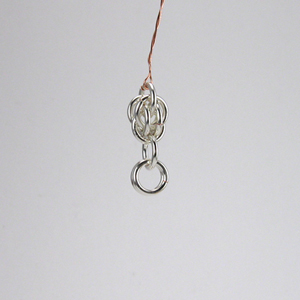 |
||
|
STEP 14: Add Two More
|
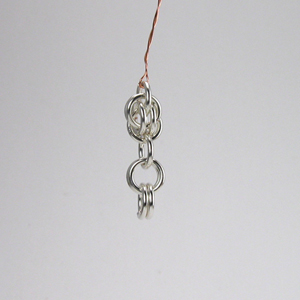 |
||
|
STEP 15: Repeat Steps 7-11
. |
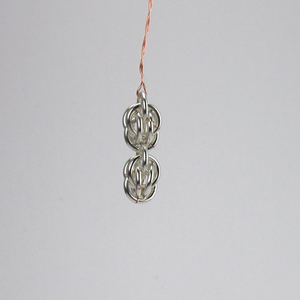 |
||
|
STEP 16: Continue to Length - Add the Last Ring You need the same gauge ring in the first and last positions of your chain to keep the chain stable. Add a SMALL 16ga 3.0mm ID jump ring, one at each end. Again, make sure that the new ring sits between the rings so not to kink. |
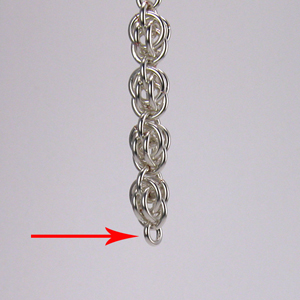 |
||
|
STEP 17: Attach the Clasp |
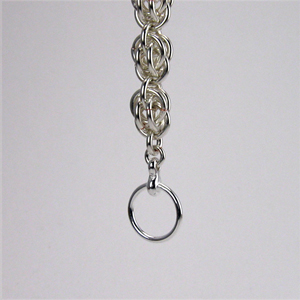 |
||

